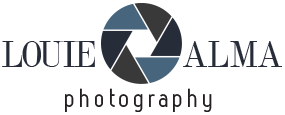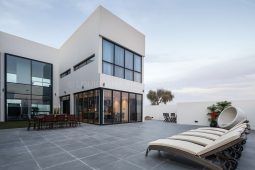Guide to Cycling in Leuven, Flanders, Belgium
It’s an easy train journey to Leuven, from London via Brussels and the station is conveniently located in the city centre. At first glance, it looks like many Flemish towns—red brick gables, cobbled squares, cyclists weaving confidently through narrow lanes. But there’s a hum here, a youthful energy you feel before you even unpack your bag.
With 50,000 students out of a population of just over 100,000, Leuven is defined by its university, its beer, and its sense of fun. It’s a place where Gothic spires meet rowdy terraces, where centuries-old libraries sit comfortably next to buzzing bars, and where Belgium’s best-loved brew, Stella Artois, was born.
It’s also a dream destination for cyclists and, with more bikes than cars in the centre, the city has fully embraced two-wheeled travel. Wide cycle lanes and bike-only streets, make navigating the compact city both safe and stress-free. And it’s easy to get going – just download the Blue-bike App, pay your money and pick up an e-bike from the underground parking at the central square, Rector De Somerplein.

Leuven
Leuven City Centre
I begin my ride at the Grote Markt, one of the most beautiful squares in Belgium. At its centre stands St. Peter’s Church, a masterpiece of Brabantine Gothic. Construction began in the 15th century and, like so many cathedrals, it was never finished—the tower intended to soar above the skyline was left incomplete. Inside, art treasures abound, most notably Dirk Bout’s Last Supper, painted in 1464, considered one of the first Flemish attempts at perspective.
But the real show-stopper is the Town Hall. It’s an almost fantastical confection, its façade bristling with turrets, pinnacles, and niches filled with statues of saints, scholars, and rulers. Some call it excessive, even ostentatious, but in the afternoon sun, it looks majestic. Leuven’s Town Hall is not about restraint, however, it’s about civic pride carved in stone.
Just nearby is the Oude Markt, often called “the longest bar in the world.” Lined on both sides by cafés and pubs, it’s a magnet for students and locals alike. By day, it’s a pleasant square for coffee or a light lunch. By night, it transforms into a carnival of clinking glasses, laughter, and music. Leuven’s nightlife begins here.
University of Leuven
Founded in 1425, the Catholic University of Leuven (KU Leuven) is the oldest in the Low Countries and has shaped the city ever since. Behind every corner, a university hall or imposing college awaits you. In the centre alone you’ll find Atrecht College (home of the first female students), Holy Spirit College, Van Dale College, Kings College (with Zoological Museum) and Pope’s College.
Dominating the huge square of Ladeuzeplein is the University Library, a grand neo-Renaissance building with an imposing clock tower. Burned down twice in the 20th century, once by the Germans in 1914 and again during the Second World War, it has become both a symbol of destruction and of resilience. It’s a hard climb up the narrow stairs to the top of its tower but the view is well worth it. I gaze over terracotta roofs across the spire of St. Peter’s Church to the flat fields of Flanders stretching way into the distance.
Another building worth a visit is the University Hall, originally a 14th century Cloth Merchants Hall before becoming part of the university in 1431. A guided tour takes me to the beautiful Rector’s Salons, the impressive Promotion Hall and to the top floor for a panoramic view of Leuven.
The Groot Begijnhof
A short bike ride brings me to the Groot Begijnhof, a UNESCO World Heritage site, a serene enclave of cobbled lanes, brick houses, and tiny gardens. It was founded in the 13th century as a community for beguines, religious women who lived independently without taking vows.
They are long gone, but the buildings have been beautifully restored and now house university students and professors. Walking its tranquil streets feels like stepping back centuries, a world away from the bustle just outside its walls.
Botanical Garden
Another serene retreat is the Botanical Garden, the oldest in Belgium, established in 1738 for medical students. Today, it’s a lush oasis with greenhouses, ponds, and flowerbeds. On a warm day, locals sprawl on the lawns, children run between statues, and the scent of herbs drifts on the breeze.
Arenberg Castle and Park
On my second day, I set out to explore beyond the city centre. Arenberg Castle and Park was for many centuries the home of noblemen but now it’s frequented by students and university staff of the KU Leuven Science and Engineering Campus. The lords of Heverlee built the first castle here in the 14th and it was extensively renovated in neo-gothic style in the 19th century
It was donated to the university in 1916, and the extensive grounds house some artworks. Perhaps the most impressive is the new Wandering Garden installation by artist duo Gijs Van Vaerenbergh. Conceived as a contemporary folly, colourful climbing plants will gradually overgrow the network of curved steel lattices – echoing the rhythm of the seasons.
Park Abbey
Just a few kilometres south, Park Abbey is known as one of the best preserved abbey sites in Western Europe. Although the abbey mainly dates back to the 17th and 18th centuries, its history goes back to 1129, when the Duke of Brabant donated his hunting grounds in Leuven to the Norbertine monks.
Cycling through the huge stone gate, its baroque church, fishponds, and restored farm buildings create a picture of monastic life that feels remarkably intact. It’s worth visiting the main abbey building to see the cloister, library and refectory with its outstanding stucco ceilings. You also get privileged access to the private quarters of the Abbot.
Brewery De Coureur
There’s no better way to finish a day of cycling than sampling some excellent Belgian beers. Tucked away in the Leuven neighbourhood of Kessel-Lo, Brewery De Coureur (French for ‘the cyclist’) is a microbrewery brimming with personality, warmth, and a unique cycling twist. The beers have cycling-related names such as Colleke, Kuitenbijter and Souplesse, and the theme continues with the décor, with recycled bike parts and even stools fitted with bicycle seats.
Brewer Bart and his partner Ine stepped away from the corporate rat race to pursue their passion of creating bold, characterful beers. You sample them in the taproom, sharing tables with other drinkers and dogs are welcome. They don’t serve food here, but you can bring your own sandwiches or even get a takeaway delivered. And it goes without saying that the beer is excellent.
Factfile
GO: Eurostar to Brussels, then local train to Leuven, around 30 minutes. Hire a Blue-bike through the app.
STAY: The Penta Hotel makes a good base in the city centre.
INFO: Visit Leuven has information about the city.
Visit Flanders has information about the region.
EAT:
- Madmum Coffeebar is good for light meals
- Baracca has Italian inspired dishes with great crispy pizza
- De Abdijimolen at Park Abbey has good food and river views from its terrace.
- De Hoom is in the former Stella Artois Brewery and serves Flemish and international dishes.
- The Optimist has inventive small and medium sharing plates with emphasis on vegetarian.
- Brewery De Coureur has excellent distinctive beer.
You may also like to read Cycling and Walking in Speyside, Scotland
The post Guide to Cycling in Leuven, Flanders, Belgium appeared first on The Travel Magazine.















































